25 Lesson 3C
1. Describir. Read the descriptions and study the clothing that each person is wearing to the various events shown in the photos. Next answer the questions about each picture.
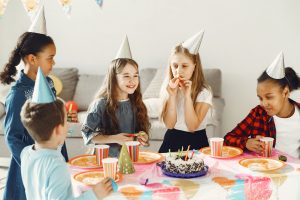
Es el cumpleños de Marta. Cumple seis años. Marta lleva un vestido azul. Su amiga Julia lleva una camiseta blanca y una falda negra. Su otra amiga Lily lleva una camisa a cuadros roja y negra. Todos llevan sombreros de cumpleaños.
- ¿De qué color es la camiseta de Julia?
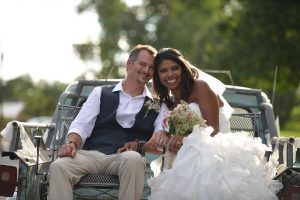 Es la boda de Milena y Roger. Milena lleva un vestido blanco y elegante. La ropa de Roger es informal. Él lleva una camisa blanca, un chaleco gris, y los pantalones caqui.
Es la boda de Milena y Roger. Milena lleva un vestido blanco y elegante. La ropa de Roger es informal. Él lleva una camisa blanca, un chaleco gris, y los pantalones caqui.
- La ropa de Milena es elegante. ¿Cómo es la ropa de Roger?
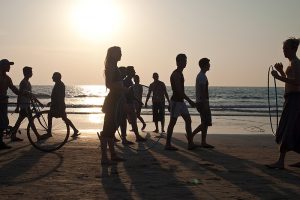 Los estudiantes universitarios asisten a una fiesta en la playa. Ellos llevan los trajes de baño, las gafas de sol, y las sandalias.
Los estudiantes universitarios asisten a una fiesta en la playa. Ellos llevan los trajes de baño, las gafas de sol, y las sandalias.
- ¿Qué llevan los estudiantes a la fiesta en la playa?
2. Emparejar. Read the following sentences about what type of clothing you have to wear to different events. Select the word from the bank that best completes the sentences.
| Un traje de baño | Un vestido | Unas botas | Un abrigo |
| Unos guantes | Unos pantalones cortos | Un traje | Una camiseta de la universidad |
- A una boda elegante tienes que llevar ________________ o ________________ .
- A un concierto en un parque en el verano tienes que llevar ________________ .
- A la clase de español tienes que llevar ________________ .
- A las vacaciones de esquí tienes que llevar ________________ , ________________ , y ________________ .
- A una fiesta con piscina, tienes que llevar ________________ .
3. Escribir. Take a look at what you and your classmates are wearing today.
Paso 1. Write a short paragraph explaining what you are wearing today. Be as descriptive as you can.
Modelo: Hoy llevo una blusa simple y blanca. También llevo una falda con muchos colores diferentes, y mis gafas moradas. Hoy no llevo calcetines porque tengo mis sandalias.
Paso 2. Share your paragraph with your partner, and compare the similarities and differences in the clothes you’re wearing today.
4. Encuesta. As a group, come up with some questions about types and colors of clothes people might be wearing. Then, poll the class to see who is wearing what clothes. What is the most common color of clothes worn today? What is the least common type of clothing worn?
Modelo: ¿Quién lleva pantalones rojos hoy? ¿Quién lleva zapatos blancos? ¿Cuántos estudiantes llevan ropa con el nombre o el símbolo de la universidad?
5. Escribir. Select a picture from Instagram/TikTok/Google and describe what the person is wearing. State at least 3 different clothing pieces and their colors.
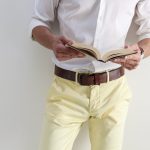
Modelo: El chico lleva una camisa blanca, unos pantalones amarillos y un cinturón café.
6. Contestar. La fiesta de graduación. Your big day is here.
Paso 1. Identify what you and your family/friends have to do and wear on this occasion. State Sí or No beside each sentence.
| Sí / No | |
| 1. Mi familia y yo tenemos que llegar a tiempo. | |
| 2. Mis amigos tienen que sacar fotos. | |
| 3. Llevo el traje de baño y las sandalias. | |
| 4. Tengo que hacer fila para entrar a la ceremonia. | |
| 5. Mi familia tiene que desayunar algo rico. | |
| 6. Tengo que llevar calcetines de muchos colores. | |
| 7. Mi familia tiene que llevar los pijamas. |
Paso 2. Write 3 to 4 sentences about what you have to do on your graduation day.
Modelo: Tengo que arrendar (to rent) la toga (gown).
7. Contestar. Los monstruos Pablo, Alejandra e Iker are so weird loooking. Read the description of Pablo and then answer the following questions about the three of them.
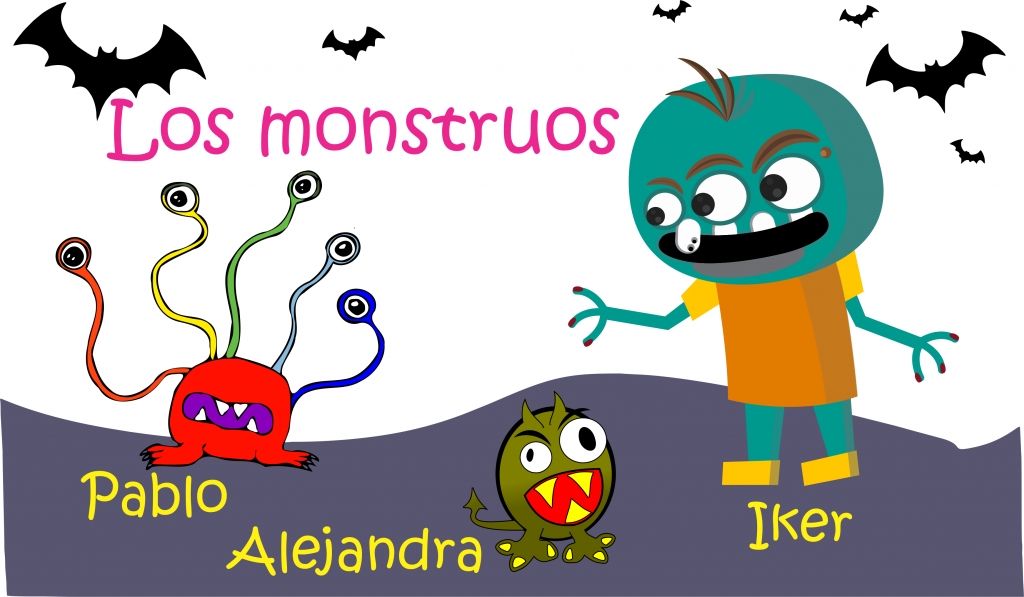
Pablo es un monstruo muy popular en Venus. Pablo ahora vive en el planeta Tierra. Pablo tiene 5 ojos y tiene dos pies. Sus tentáculos son de colores diferentes. Su boca es violeta y solo tiene 4 (cuatro) dientes. Pablo es muy simpático y aventurero.
Paso 1. Answer the following questions using complete sentences.
- ¿De qué colores son los tentáculos de Pablo?
- ¿Cuántos ojos tiene Iker?
- ¿Cuántos dedos tiene Iker?
- ¿Cuántas manos tiene Alejandra?
- ¿De qué color son las piernas de Iker?
Paso 2. Now pick either Alejandra or Iker and write a short paragraph describing one of them. Use Pablo’s description as a model.
8. Describir. What do you have to have (tener) or to be (ser) in order to become the things below? Work with your partner to match the necessary body parts and characteristics with the person or creature. Use tener + que + verbo infinitivo in your answers.
Modelo: El monstruo tiene que ser antipático. El monstruo tiene que tener dos cabezas.
| piernas fuertes | hombros masivos | muchos músculos | pies pequeños |
| manos gigantes | cabeza dura | fuerte | dos cabezas |
| una altura (height) de ocho pies | dientes afilados (sharp) | flaco | feo |
| tres ojos | brazos grandes | alto | antipático |
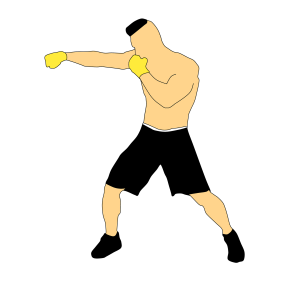 |
El boxeador |
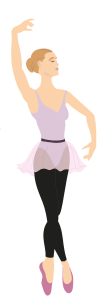 |
La bailarina |
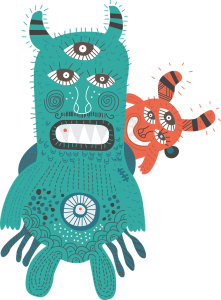 |
El monstruo |
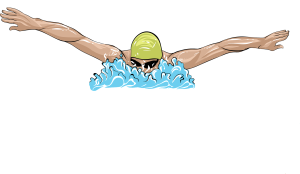 |
La nadadora |
9. Dibujar. El monstruo más monstruo de todos. For this activity, you are going to draw a monster that will compete against the monsters drawn by your classmates.
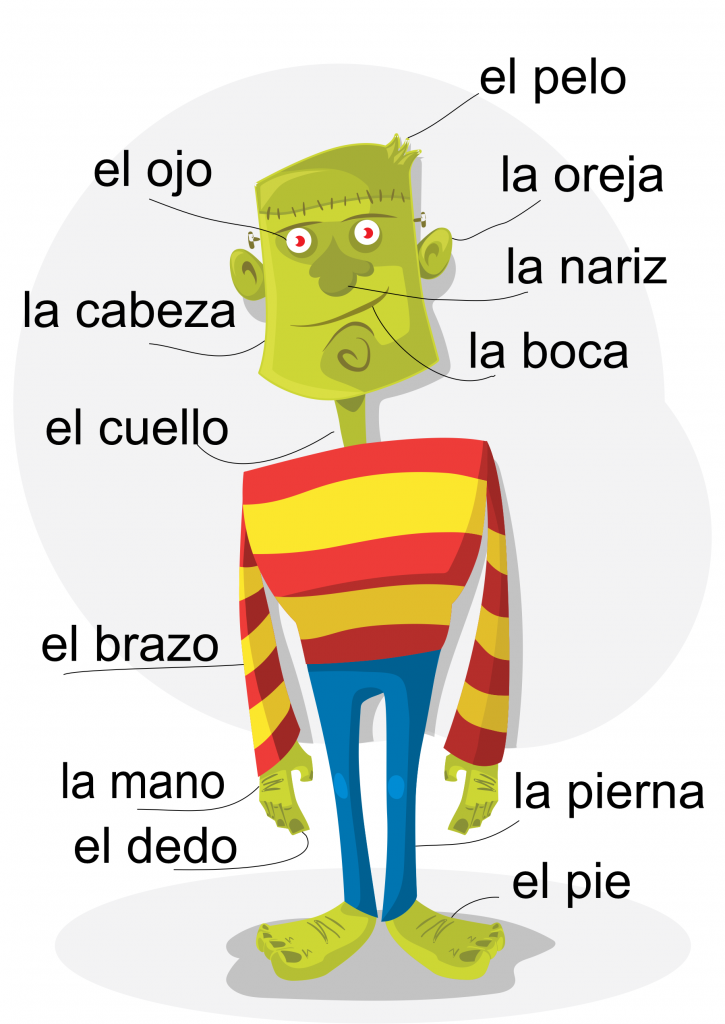
Paso 1. Grab a piece of paper and draw your monster, just remember that this is a competition and you want your monster to win. After you are done drawing label all his body parts.
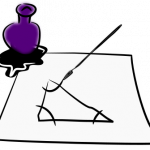
Paso 2. Take a minute to think about your monster personality, is he funny? is she angry all the time? are they annoying? Once you are ready describe (the way they look and how they are) your monster to one of your classmates. Oh, do not forget to give them a name.
Paso 3. The battle of the monsters. With your group (max 5 students) look at all the monsters and pick the monster that in your opinion could win the battle. Get ready to present your monster to your class; send a picture of the monster to your teacher so they can share it with the class. One more thing: the person that drew the monster is not allowed to present it.
Remember, that points will be awarded to the best monster (the one that looks like a monster), the worst monster (the one that does not look like a monster at all), and the participation prize (to the monster with the best personality).
Paso 4. Time to vote. List your top 3 for the following categories. Who won the bottle?
- El mejor monstruos de la clase es …
- El peor monstruos de la clase es …
- El premio de participación va a …
10. Escribir. El monstruo de nuestra clase was nominated for the Academy Monster Awards. He just texted you asking for advice on what to wear that night. Write down to the monster and let them know what they should wear.
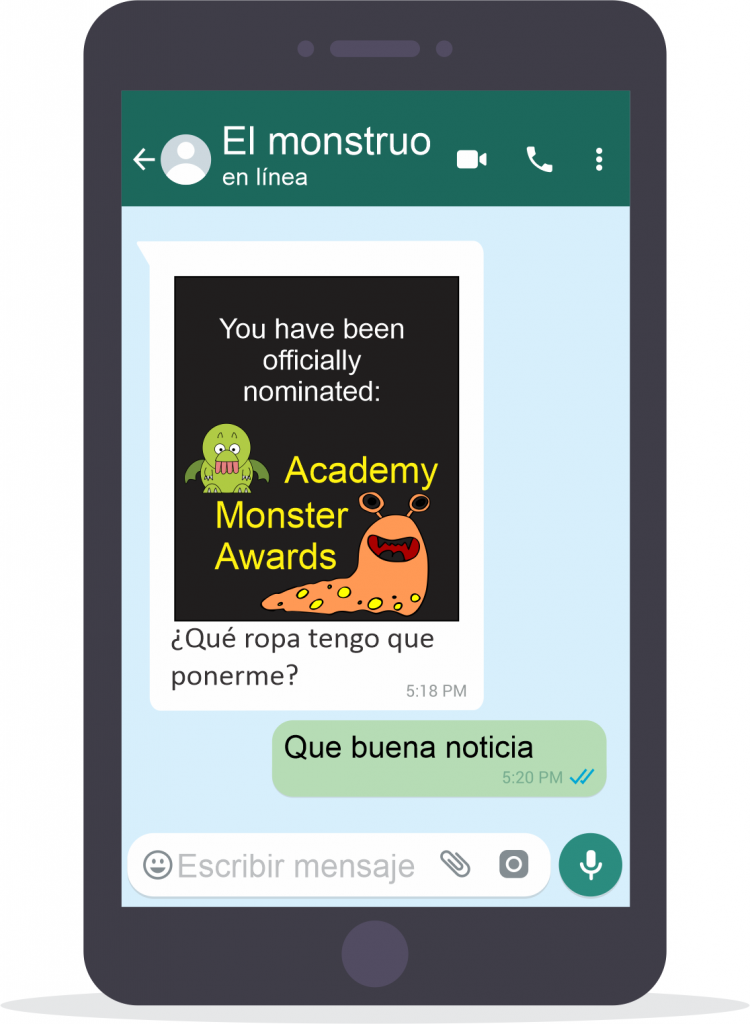
11. Jugar. You and your classmates are going to play Simon Says or “Simón dice” using the body parts you just learned. Remember to do what your instructor tells you, but only if she starts her sentence with “Simón dice…”. Instructor note: You can give the instructions and then have your students volunteer to be Simón.
Modelo:
| La instructora (o estudiante A) | Los estudiantes |
| Simón dice toquen (touch) la nariz. | The students touch their nose. |
| Simón dice toquen la rodilla. | The students touch their knee. |
| Toquen el estómago. | The students should NOT touch their stomachs because they did not hear “Simón dice…” |

